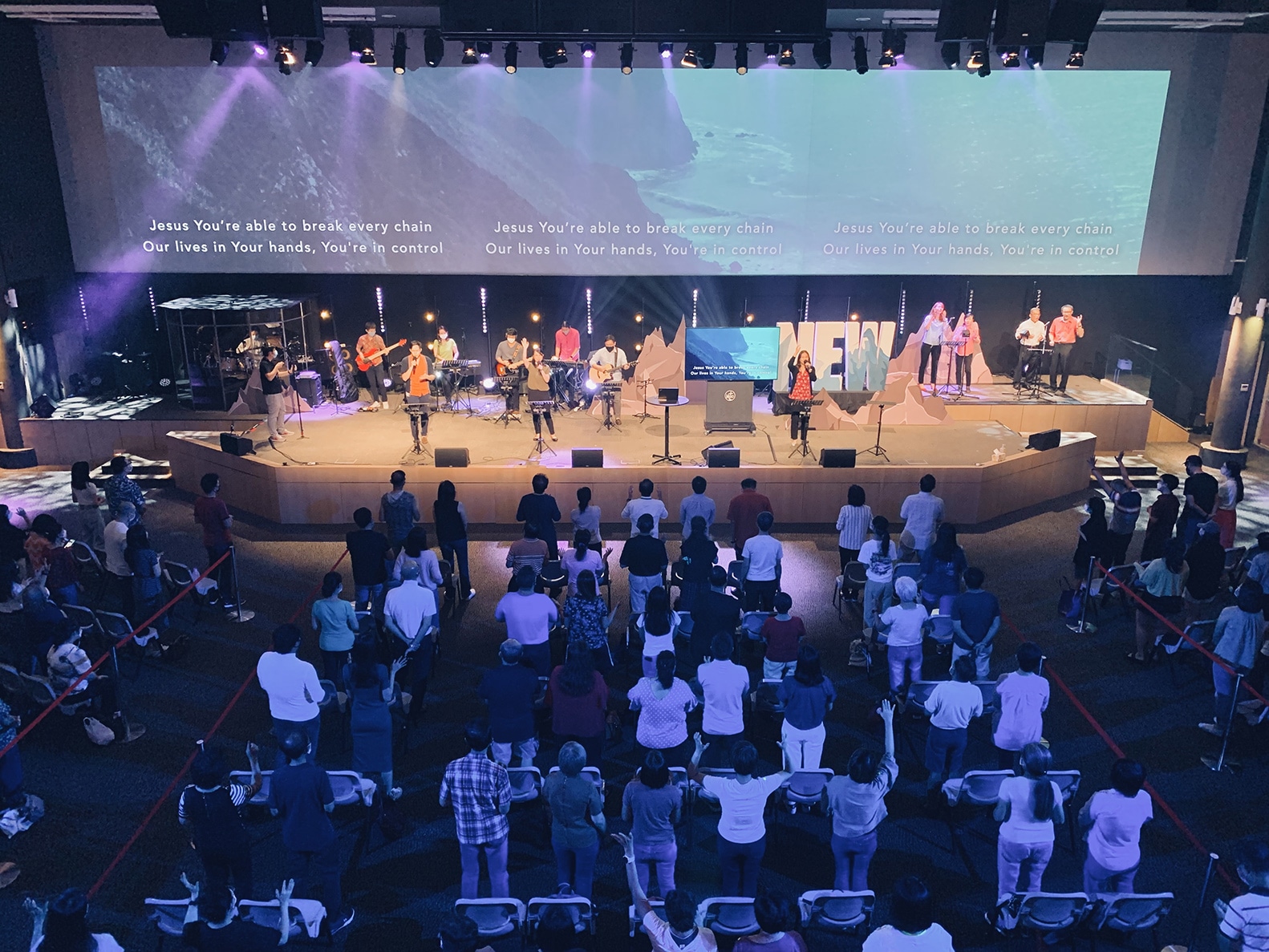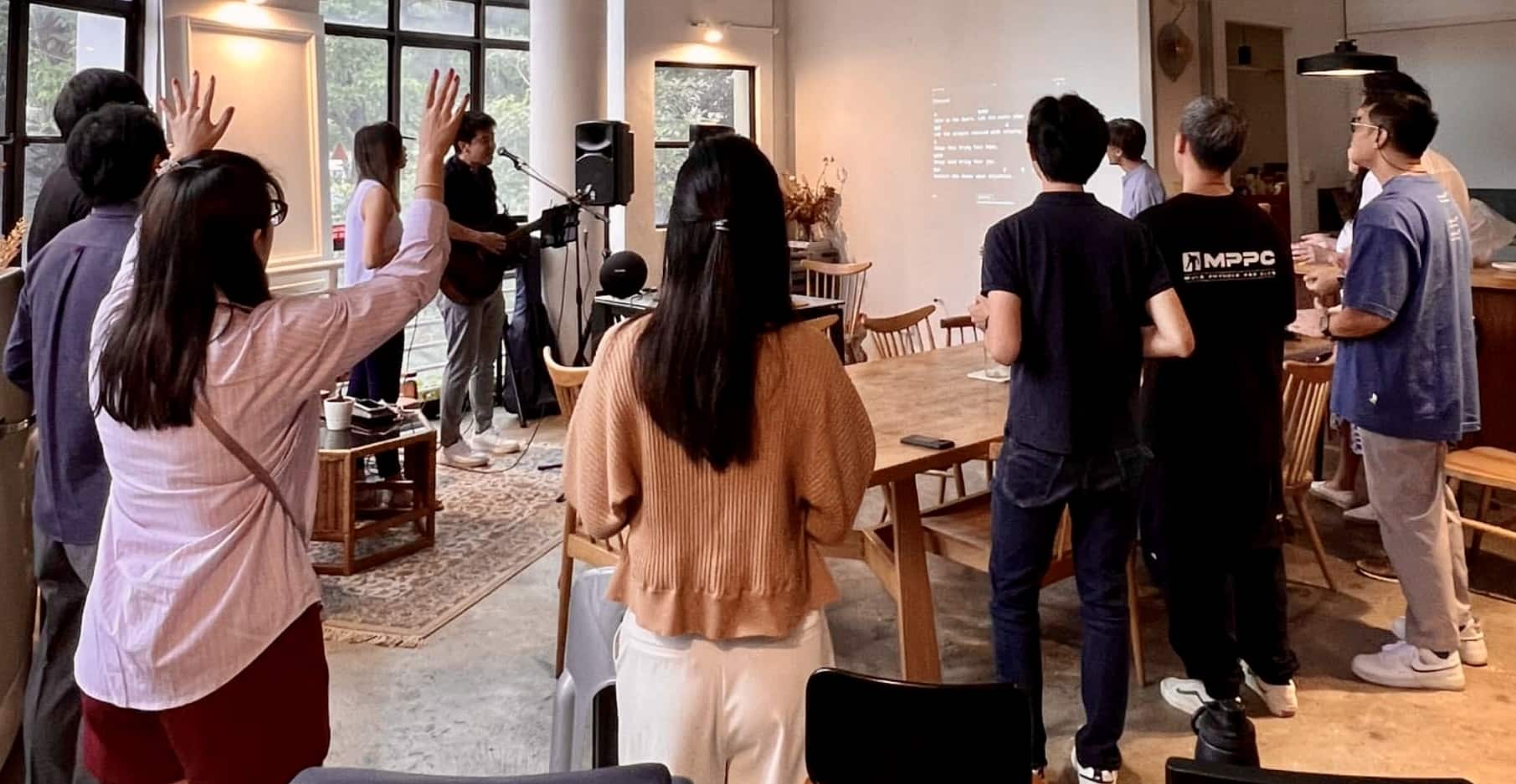Increased capacity, no more zones: New streamlined measures for church services from March 15
by Edric Sng // March 12, 2022, 5:59 pm

Church worship service capacity can increase from March 15, as part of streamlined nationwide safe management measures.
From March 15, worshippers at church services in Singapore will no longer need to be segregated in zones, and safe distancing will not be mandated, the Ministry of Culture, Community and Youth (MCCY) announced on Friday (March 11).
This move to streamline safe management measures nationwide was first announced in February, but postponed after a spike in COVID-19 cases. The new relaxed guidelines from March 15 are the same as those previously announced.
The government announced that safe management measures are being streamlined from March 15 to a set of five core parameters – group size, mask-wearing, workplace requirements, safe distancing and capacity. With these changes, “it will be easier for everyone to comply with them on a daily basis and do our part as we transition to a COVID-19 resilient nation”, the ministry announced.
The size limits on services involving more than 1,000 congregants will also be lifted at venues that can accommodate twice that number of participants, added MCCY.
Congregational singing, however, remains disallowed under the new measures.
KEY CHANGES
1. Service size: Depending on venue capacity, more than 1,000 worshippers may be allowed
From March 15, worship services or other religious activities can now involve more than 1,000 participants, provided that the number of worshippers does not exceed 50% of the venue’s capacity.
“For example, a worship service with 1,200 worshippers will need to be held at a venue that can accommodate at least 2,400 worshippers. Otherwise, the worship service would have to be capped at 1,000 worshippers,” said MCCY.
However, all participants must be fully vaccinated, as religious organisations must continue to implement vaccination-differentiated safe management measures (VDS) for all services, said MCCY. All participants above 6 years old must be masked at all times, though young children are encouraged to use a mask.
SafeEntry, using the TraceTogether App or Token, will continue to be required for check-in. Churches will not need to maintain a list of attendees for contact-tracing, as TraceTogether fulfils that function, MCCY confirmed.
2. Zones or safe distancing no longer mandated
From March 15, current requirements for worshippers to be segregated in zones of 100 will be lifted.
Worshippers can sit without safe distancing between each other, and without the need to be arranged in groups of 5. However, safe distancing is still encouraged where possible.
MCCY has advised religious organisations to avoid chokepoints and to spread crowds out as evenly as possible to avoid overcrowding.
3. On-stage performers: No need for 1m distance if masked; distance to congregation now 1 metre
From March 15, if all performers in a group are masked, they no longer need to maintain a safe distance from other groups such as worshippers or religious workers.
However, if there are any unmasked performers in the group, they must be in groups of five and must continue to keep a 1m distance from other groups.
In line with existing measures, up to 50 persons will be allowed to be involved in the conduct of the worship service, and up to 20 persons involved in conducting the service may be unmasked at any one time to sing or play wind or brass instruments. They must have a negative ART test result taken within 24 hours before the end of the live performance.
There must be at least a 1 metre setback between those performing on stage and worshippers.
As before, worshippers are not allowed to sing, even with masks on.
4. Religious classes: Up to 1,000 allowed, without VDS
From March 15, mask-on religious rites, activities and classes that are not part of a worship service can involved up to 1,000 people, subject to prevailing safety and room capacity requirements. MCCY confirmed that such classes will not be subjected to Vaccination-Differentiated Safe Management Measures, or VDS.
5. Children’s classes: No FET required for volunteers
From February 18, those involved in conducting religious classes for children aged 12 and below are no longer required to undergo Fast and Easy Testing (FET), which has been in place since October 2021.
6. Marriage solemnisations: Capacity limits the same as worship services, with VDS
From March 15, marriage solemnisations will have similar capacity as worship services, and thus can involve more than 1,000 participants, provided that the number of worshippers does not exceed 50% of the venue’s capacity. Such events are VDS events, requiring all participants to be vaccinated.
7. Funerals held in churches: Capacity limits the same as worship services, without VDS
From March 15, “funerals in places of worship will be allowed without VDS, with similar capacity conditions as worship services”, said MCCY. This means that funerals held in worship services can involve more than 1,000 participants, provided that the number of worshippers does not exceed 50% of the venue’s capacity.
No receptions with food or drinks are allowed. Non-wind live instrumental music is allowed, but other performances – singing, dancing, variety acts – are not.
Visits to columbaria at places of worship for up to 5 persons will continue to be allowed without VDS.
RELATED STORIES:
Back again in the Valley of Decision, as pandemic transitions into endemic
On the frontlines and far from home: Two foreign nurses draw comfort from giving comfort
We are an independent, non-profit organisation that relies on the generosity of our readers, such as yourself, to continue serving the kingdom. Every dollar donated goes directly back into our editorial coverage.
Would you consider partnering with us in our kingdom work by supporting us financially, either as a one-off donation, or a recurring pledge?
Support Salt&Light



